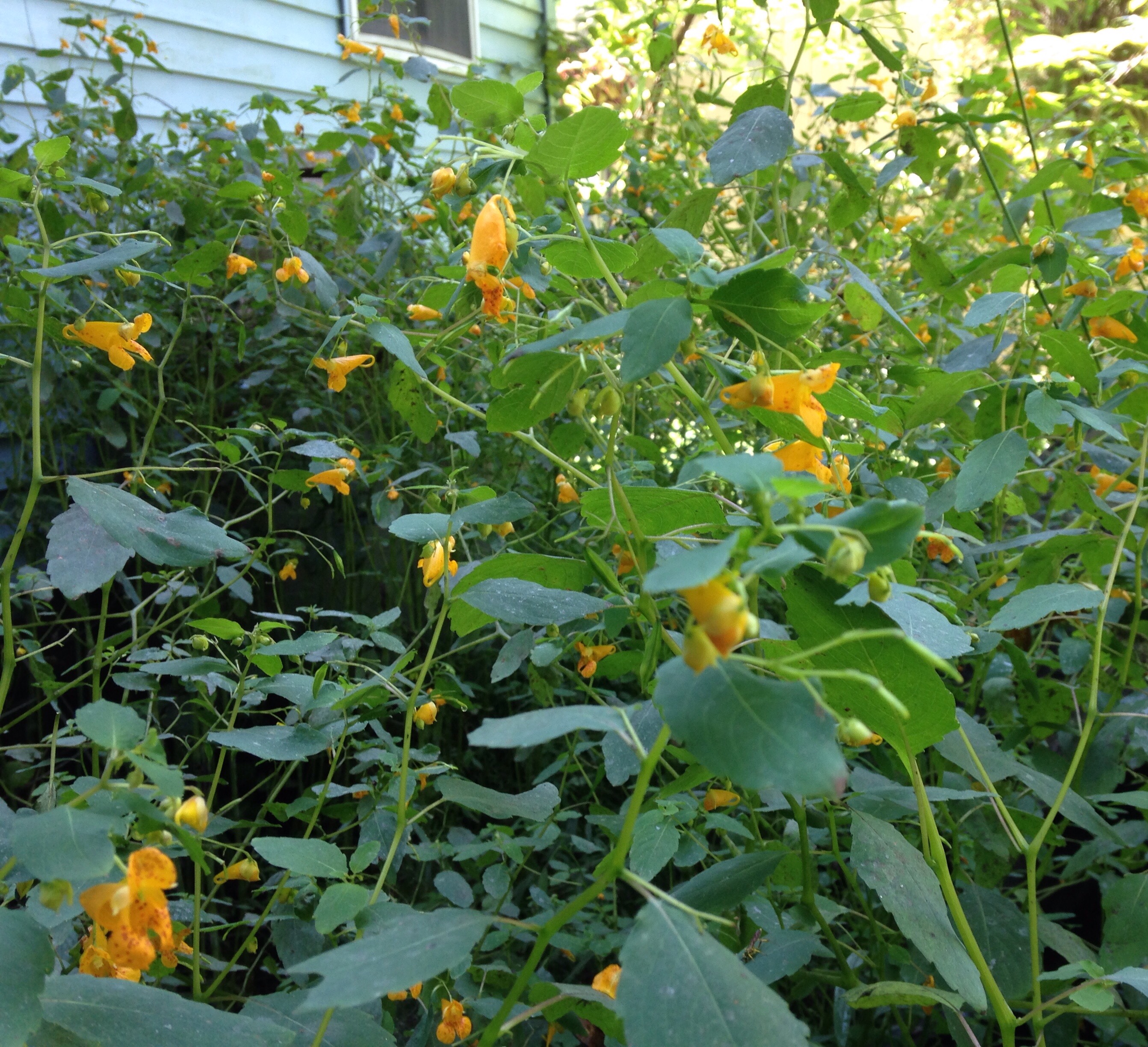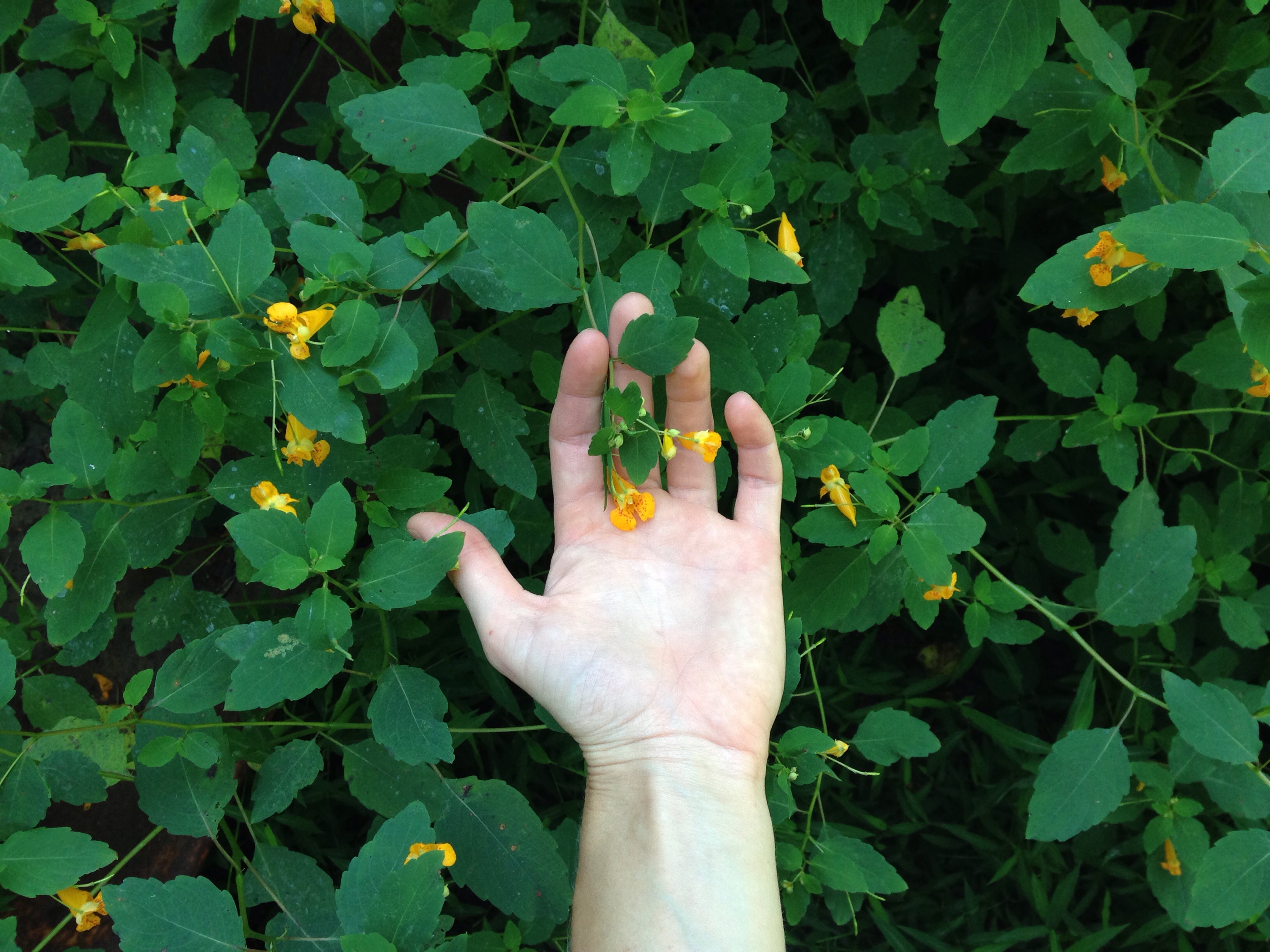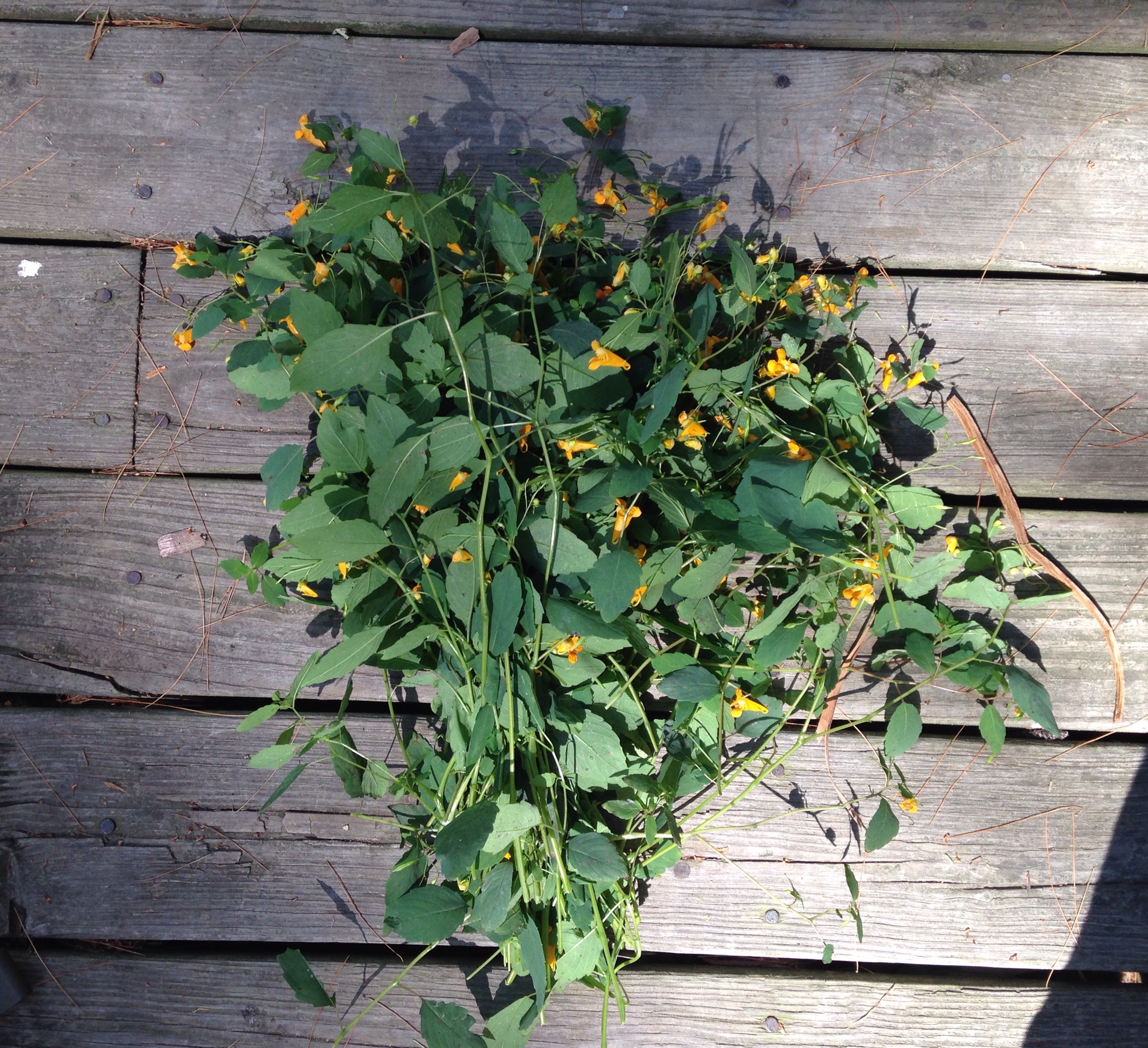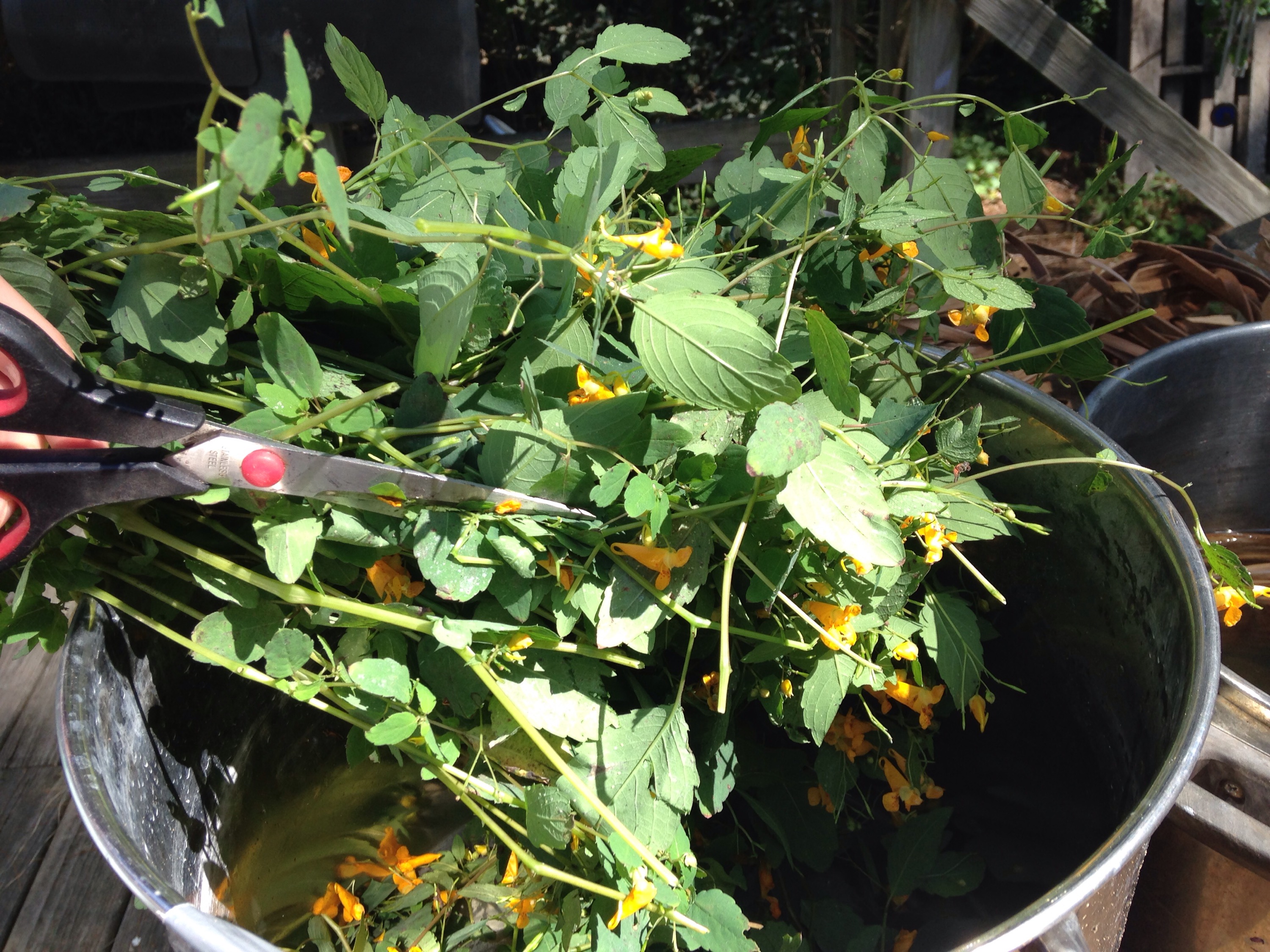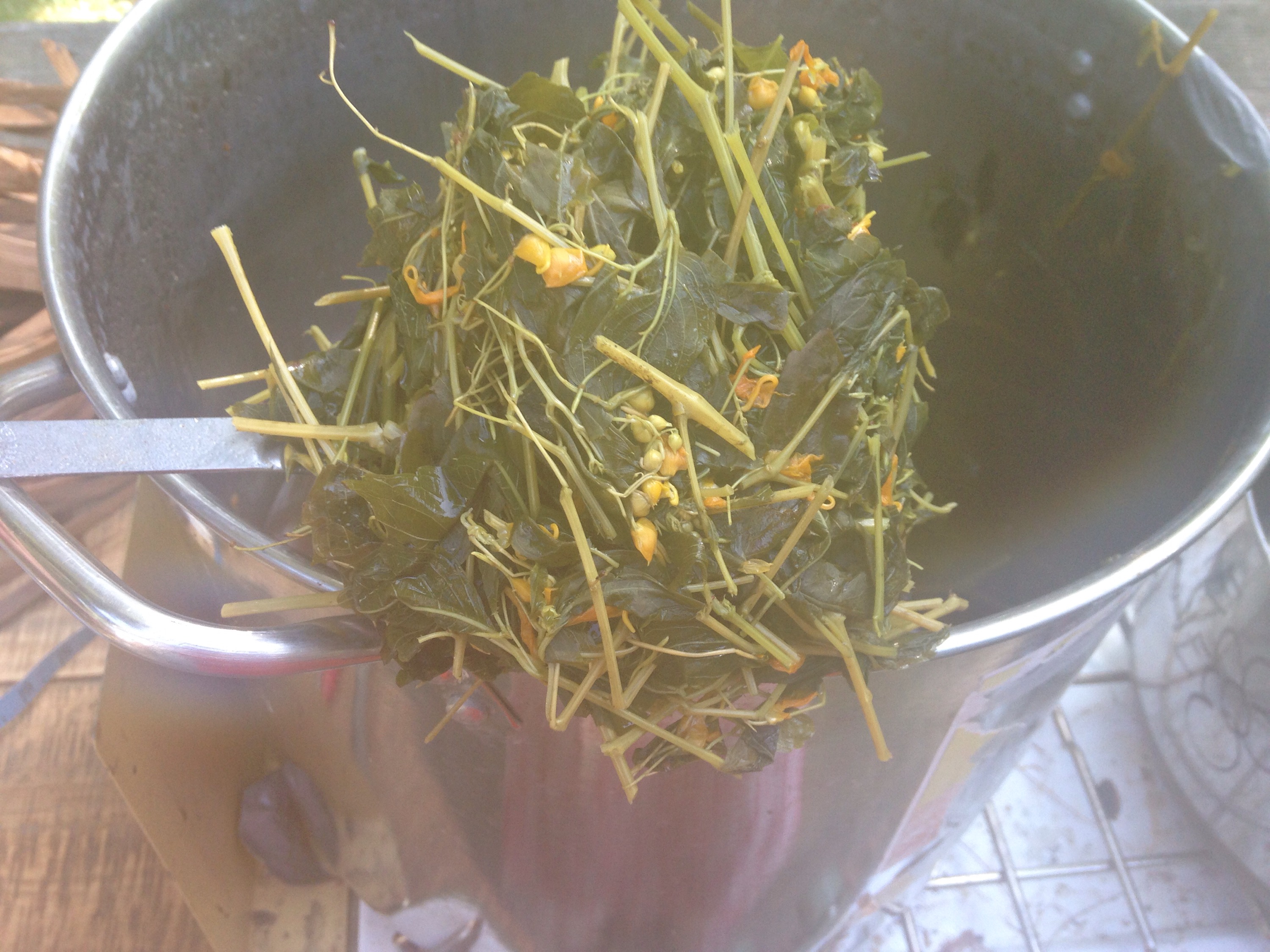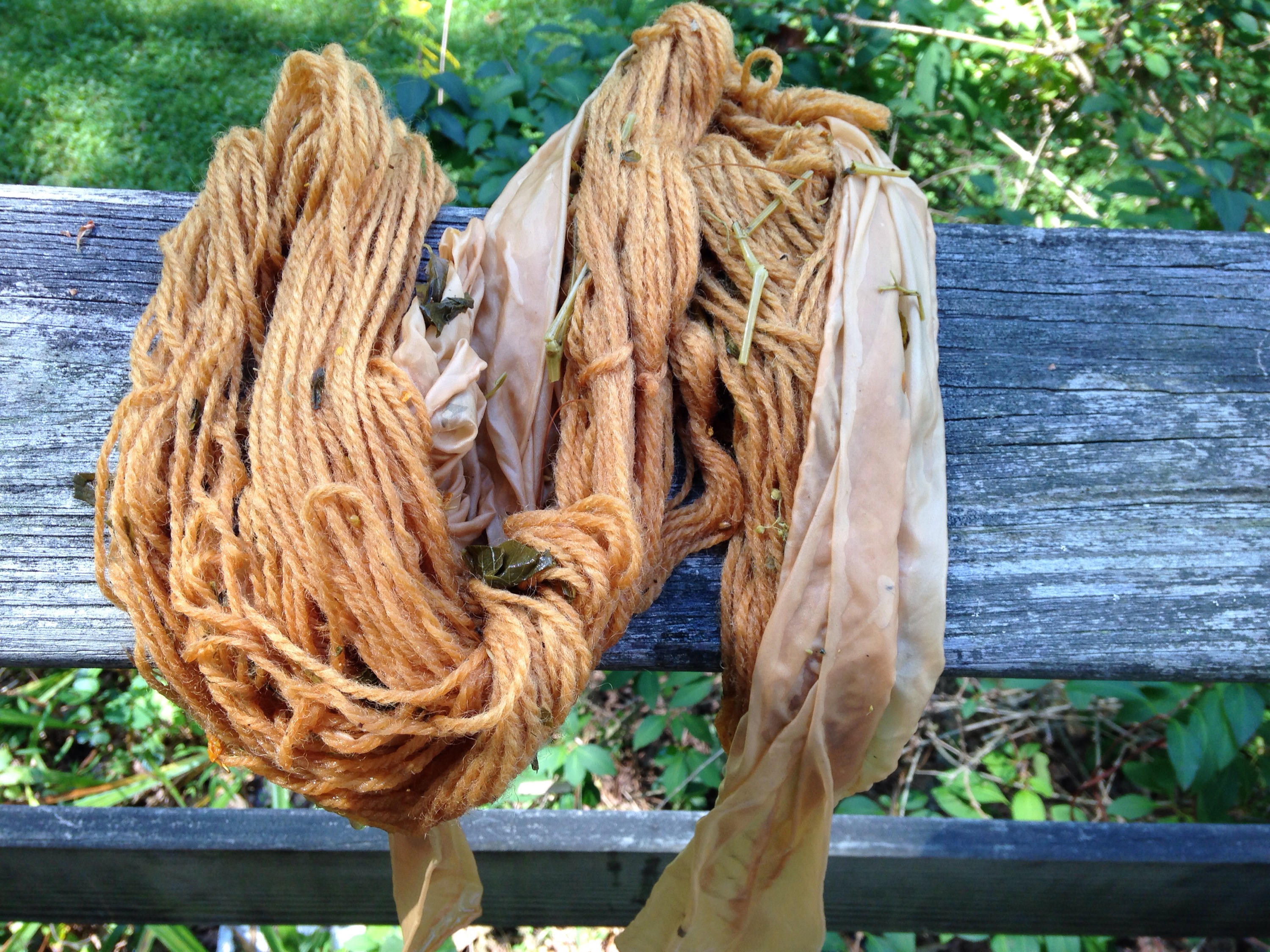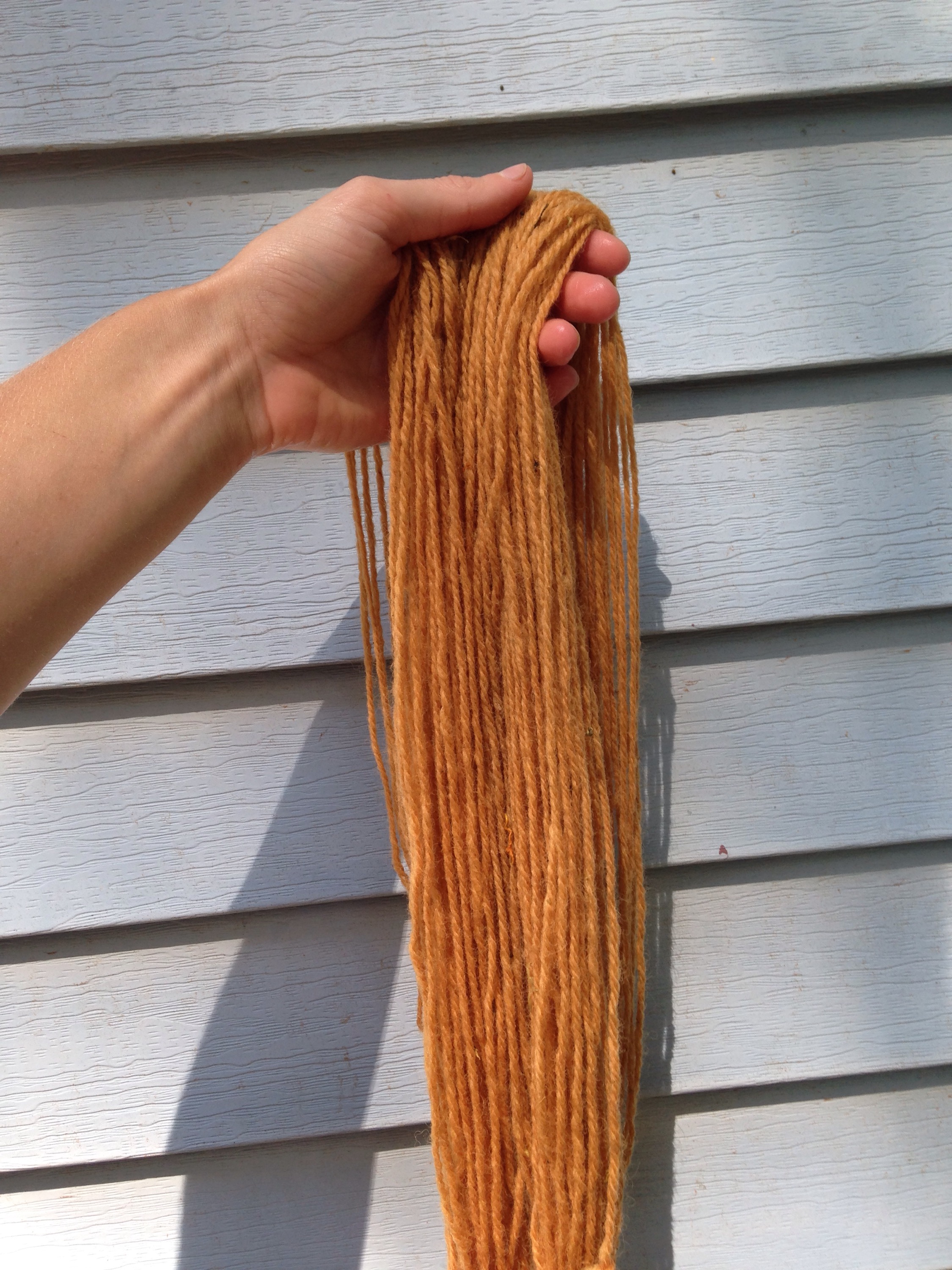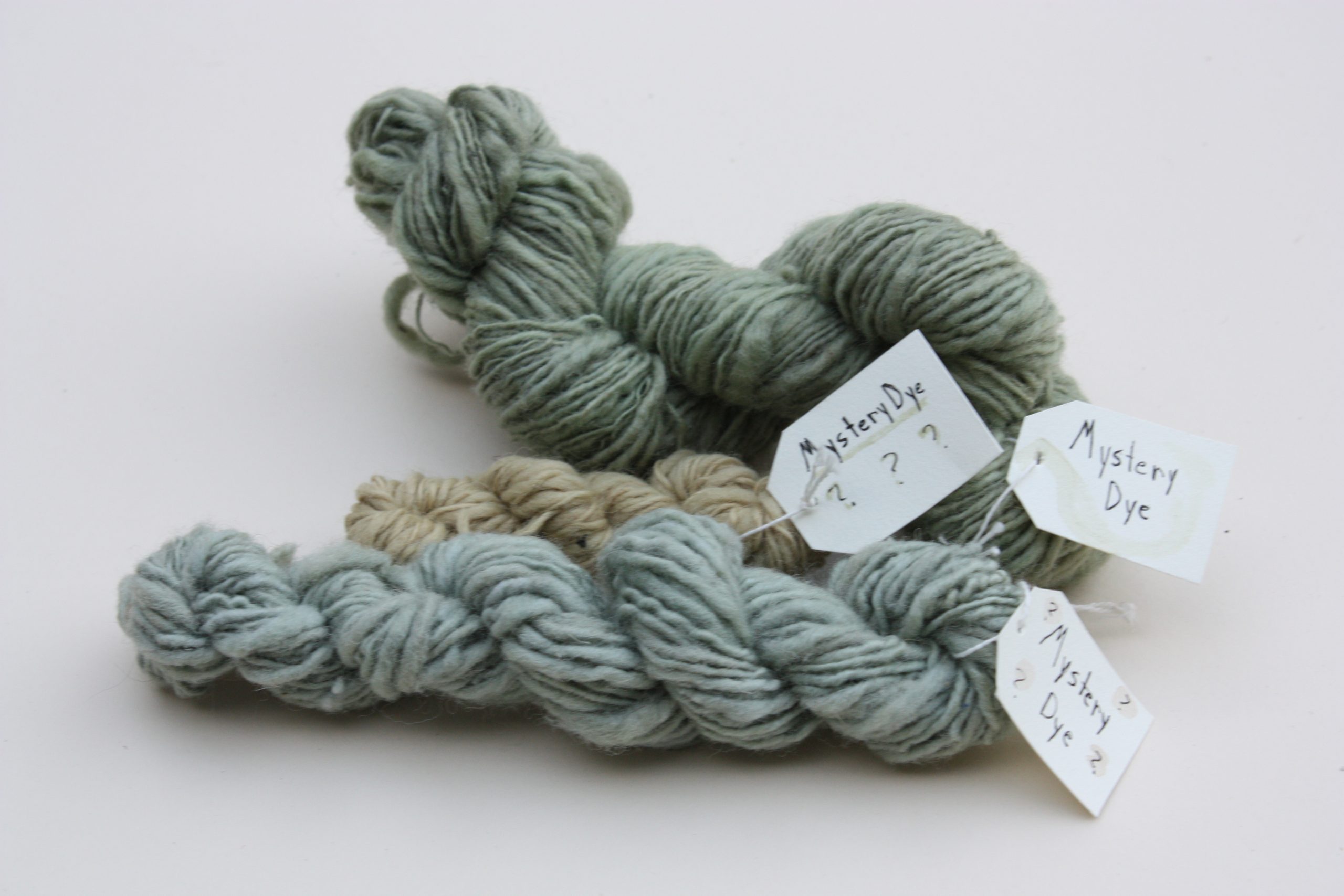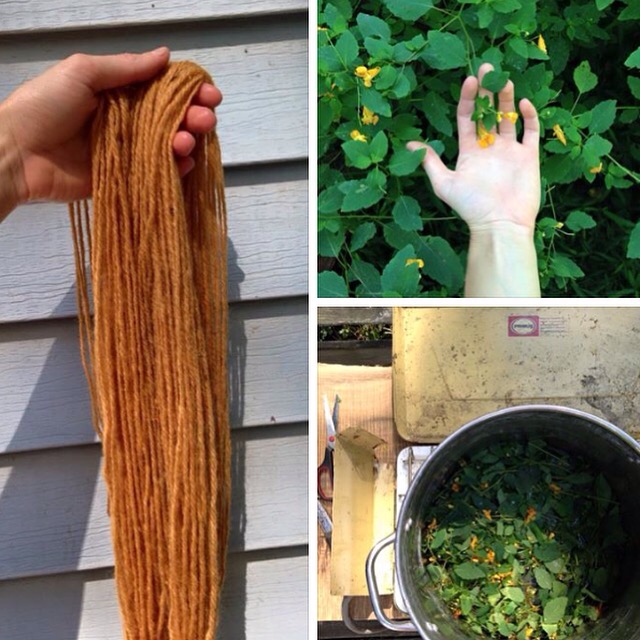
Plant Dye Recipe and Tutorial: How to Make a Jewelweed Dye
This summer I am so happy to have finally experimented with a plant that I have been noticing, but not taking seriously, for several years: Jewelweed. This is truly an unsung hero of the plant dyes world. The plant tops make a beautiful, mellow, orange-yellow color on wool and a lighter version on silk. I pre-mordanted all my fibers in Alum and suspect that using no mordant would yield significantly lighter results, but can’t say for sure. (Check out my alum mordanting recipe here) For all of you who enjoy recipes and tutorials here is a brief and basic on on making jewelweed dye. I apologize for not having measurements– it’s just the way I like to make things (I cook this way too! Baking does not always go so well…)
- Identify your Jewelweed.
Jewelweed is an annual in the large genus Impatiens. It is a native to North America and there are two common species present: Impatiens capensis, (Orange, or Spotted Jewelweed) and Impatiens pallida (Yellow, or Pale, Jewelweed). There may be another, but I’m not sure. I used Impatiens capensis, or Orange Jewelweed for my dye bath, but suspect that Yellow would have similar results. It’s a herbaceous plant that at the same time is very succulent and juicy, and also is water repellent. It is commonly used mashed up on the skin to treat rashes and poison ivy. It’s an amazing plant that I’m really excited to have gotten to know this year. To further identify Jewelweed consult a field guide or the internet. You’ll start seeing it everywhere!
2. Harvest the jewelweed. I collected an armful to dye about 3-4 ounces of wool and silk combined and it was plenty.
3. Cut up the jewelweed into smaller pieces. No need to shred it though since jewelweed practically melts into the pot. Use stainless steel for your pot if possible.
4. Fill the pot with enough water to cover the jewelweed plus some extra so your fiber can float freely later. Cook the jewelweed on a low simmer for 30 to 60 minutes.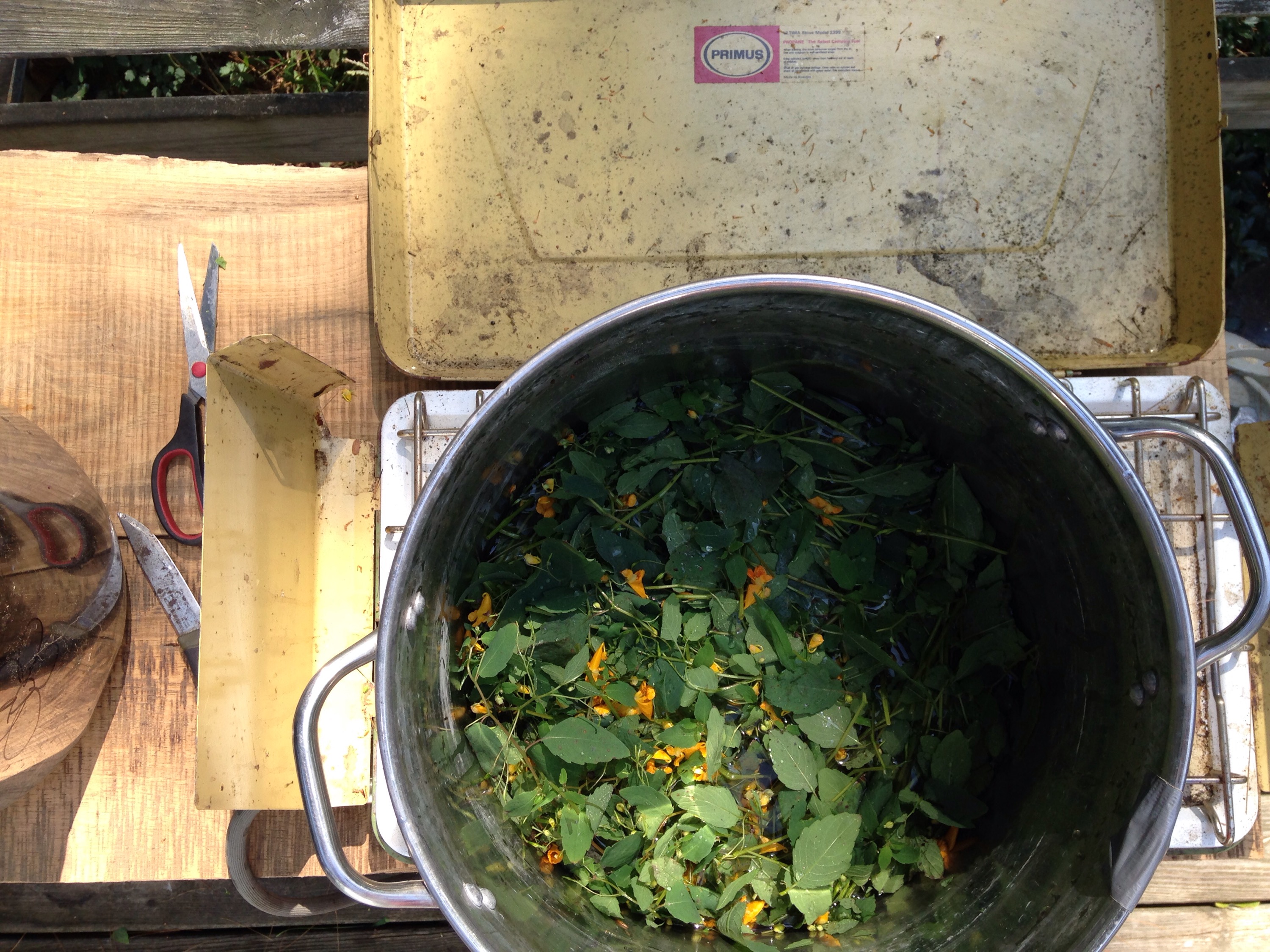
5. Strain the jewelweed out and compost it. Add your fibers and put on a light simmer for another 30 to 60 minutes. after the time is up you can turn off the heat, remove your fibers and rinse them well OR you can let it sit overnight if you have time. I prefer to do this just to give it a little extra time in the dye bath.
6. Rinse and hang to dry in a shady spot.
7. Admire your beautiful results!
From left to right: elderberry, comfrey, goldenrod, jewelweed.
And the consolidated recipe:
- Identify using a field guide, photos, or asking a friend knowledgable in the realms of plants.
- Harvest. I used a large armful to dye 3-4 ounces of fiber.
- Cut up a little bit
- Put in a stainless steel pot and cover with enough water so your fibers can float freely later.
- Simmer the plant material for 30 – 60 minutes.
- Strain out the Jewelweed.
- Add your pre-wetted fiber and heat on medium for 30-60 minutes.
- Either remove now, or let sit in the pot overnight.
- Rinse well and hang to dry in a shady spot.
- Admire your results!

